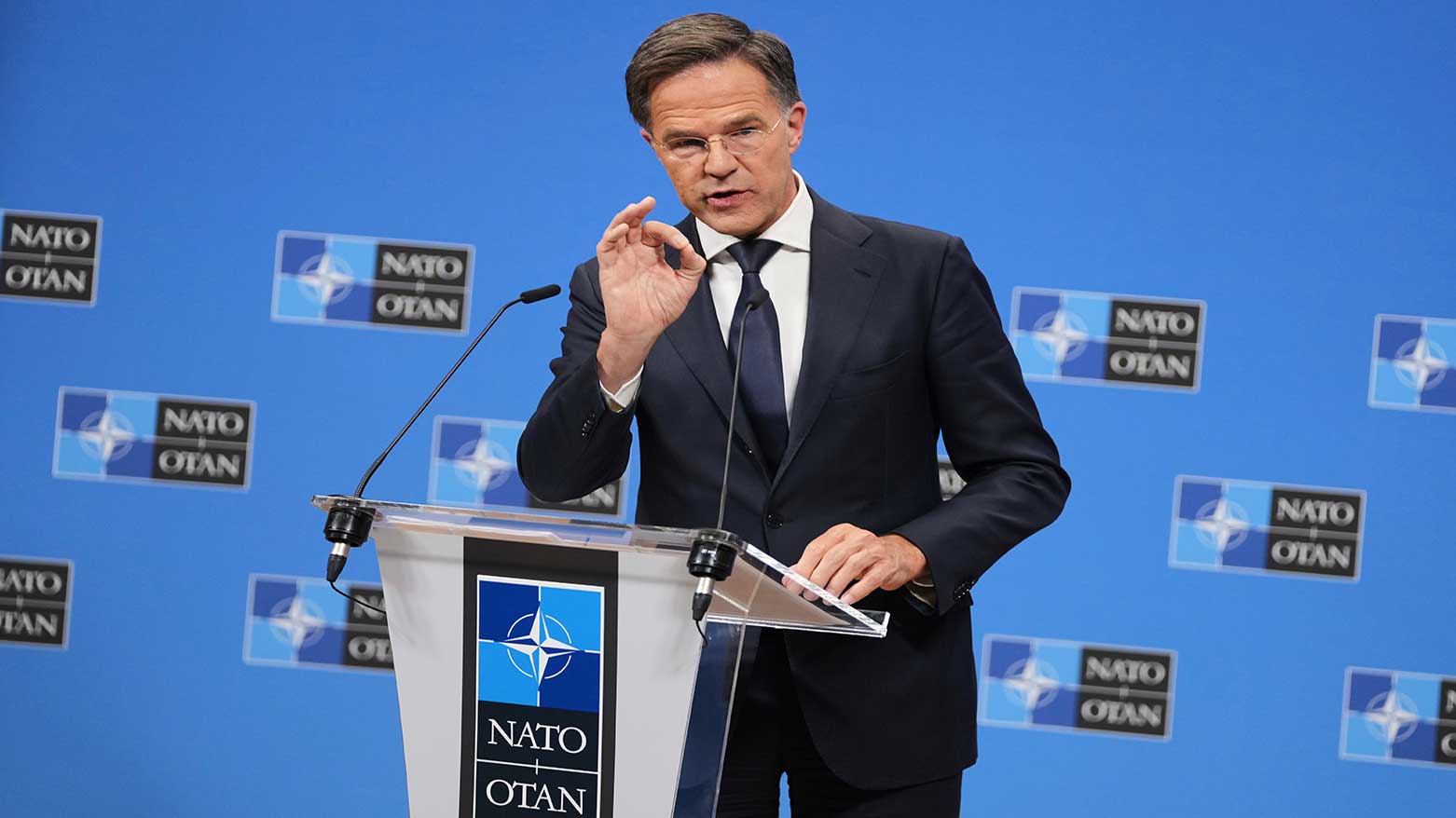NATO Launches Annual Nuclear Exercise Amid Rising Global Tensions
Steadfast Noon nuclear drills begin as Russia escalates nuclear threats and China, North Korea deepen anti-Western ties

ERBIL (Kurdistan24) — NATO on Monday launched its annual nuclear deterrence exercise Steadfast Noon, a long-planned training aimed at testing the Alliance’s readiness and maintaining the credibility of its nuclear deterrent — but this year’s drills come at a moment of particularly heightened global tension.
The Netherlands is hosting the 2025 exercise, with operations centered at Volkel Air Base and additional activity in Belgium, the United Kingdom, and Denmark.
Around 70 aircraft from 14 Allied nations are taking part, including both conventional and dual-capable aircraft, supported by surveillance, refueling, and command-and-control assets. NATO officials emphasized that Steadfast Noon is a routine exercise involving no live weapons.
“We need to do this because it helps us make sure that our nuclear deterrent remains as credible, safe, secure, and effective as possible,” NATO Secretary-General Mark Rutte said Friday.
Yet the timing of this year’s exercise — as Russia issues renewed nuclear threats against the West and deepens military cooperation with China and North Korea — has imbued the event with geopolitical weight.
A Show of Deterrence Amid Russian Threats
Moscow has repeatedly warned that NATO’s continued support for Ukraine risks “catastrophic consequences,” with Russian President Vladimir Putin hinting at potential nuclear use should “Western aggression” threaten Russia’s “territorial integrity.”
In recent months, senior Russian officials have gone further, suggesting that Europe itself could become a target if NATO continues arming Kyiv.
Western intelligence agencies have also reported that Russia has deployed tactical nuclear weapons to Belarus and increased activity at several long-range missile facilities — moves widely interpreted as an attempt to intimidate NATO Allies and test the cohesion of the transatlantic alliance.
By pressing ahead with Steadfast Noon, NATO signals its refusal to yield to such pressure. “The exercise demonstrates that the Alliance’s nuclear deterrent is operational, unified, and capable,” said Jim Stokes, NATO’s Director of Nuclear Policy. “It’s about transparency and preparedness, not provocation.”
Growing Anti-Western Axis
The exercise also unfolds against the backdrop of a strengthening alliance among Russia, China, and North Korea — a partnership increasingly defined by shared opposition to Western influence.
The three nations have conducted joint naval drills in the Pacific, and Pyongyang has reportedly supplied Moscow with artillery shells and missiles for use in Ukraine.
China, meanwhile, has provided economic and diplomatic cover for Russia’s war and has dramatically expanded its own nuclear arsenal, raising fears of a new era of strategic competition reminiscent of the Cold War.
Military experts say this emerging triad — an authoritarian bloc armed with nuclear capability and geopolitical ambition — is reshaping NATO’s threat landscape.
“The world is witnessing a convergence of revisionist powers that reject the Western-led international order,” said a European defense analyst. “NATO’s nuclear posture is no longer about Cold War deterrence; it’s about managing a multipolar nuclear environment.”
NATO’s Nuclear Doctrine and Strategic Adaptation
Under its 2022 Strategic Concept and the 2012 Deterrence and Defense Posture Review, NATO’s nuclear forces are intended to “preserve peace, prevent coercion, and deter aggression.”
The Alliance maintains that while it seeks a world without nuclear weapons, it must remain a nuclear alliance as long as such weapons exist.
The United States’ strategic nuclear forces remain the cornerstone of NATO’s deterrence policy, complemented by the independent arsenals of the United Kingdom and France.
Several European nations also host U.S. nuclear weapons under NATO’s nuclear-sharing arrangements — a system designed to reinforce collective defense and political unity.
Since Russia’s full-scale invasion of Ukraine in 2022, NATO has significantly bolstered its deterrence posture, enhancing readiness for potential chemical, biological, radiological, and nuclear threats.
The Alliance has also accelerated modernization of its dual-capable aircraft and strengthened integration between nuclear and conventional forces.
A New Nuclear Era
While NATO insists that Steadfast Noon is not linked to current world events, this year’s iteration inevitably resonates as a signal of defiance and reassurance — a message to both adversaries and Allies that the transatlantic security guarantee remains intact.
In a world marked by renewed great-power rivalry, nuclear brinkmanship, and the rise of anti-Western military cooperation, NATO’s exercise serves not only as a technical drill but also as a strategic reminder: the Alliance’s collective defense, rooted in deterrence, is as vital now as it was during the darkest days of the Cold War.
